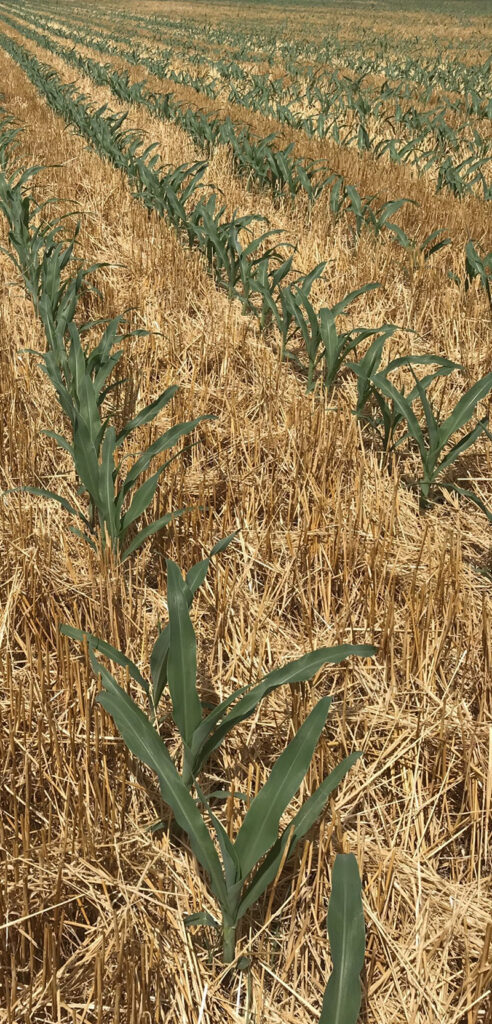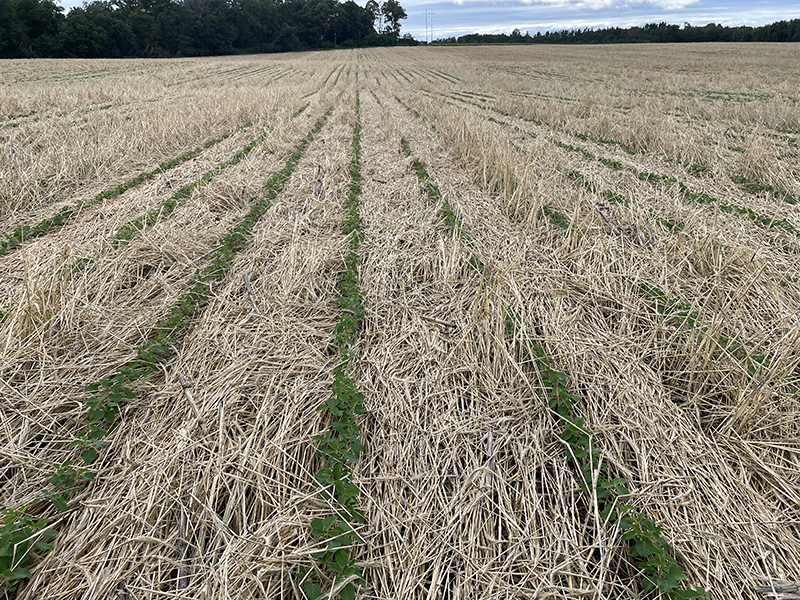by Ethan Begle, Technical Service
A weed is a plant in an undesirable place. When we are trying to grow a monoculture of corn, soybeans, wheat, milo, etc., any other plant in the field is a weed. Whether it’s from birds, wind, or some other mode of transport they find their way to our fields. Many seeds can last for a decade or much longer, waiting for the ideal conditions for germination. Each type of seed has a unique environment it prefers to germinate in. While it does take water, sunlight, oxygen, hydrogen, and the correct temperature for this to happen, there are also specific nutrient conditions in the soil each plant prefers. Weeds are there to keep the soil covered and to filter and correct imbalances in the soil.
It’s generally noted that some species grow better with certain companion plants. This has gained more interest and focus with inter-seeding cover crops and maintaining living roots in the soil year-round. Figuring out which plants corn, beans, and wheat tolerate or even thrive with will become more valuable as we continue to understand how biology supplies nutrients to crops. Knowledge of different plant groups is helpful to know what plays well with each other, warm season grass/broadleaves vs cool season grass/broadleaves.
A mat of cover crops gives good suppression but only for a short time into the growing season. To achieve a <95% kill with a roller crimper, the cover crop needs to be at least at the boot stage, which can delay early planting in northern areas. However, when using early-maturing hybrids, they can effectively control weeds.
If you live west of Highway 81, it’s dry enough that the question of moisture availability from cover crops becomes valid. In these western areas, preserving as much residue as possible with the least disturbance is crucial. Nonetheless, even a low-population, wide-row cover crop is better than fallow. Again, the power of roots is key.
Having something growing is the competition part of weed control. A tall, healthy crop canopy is the best defender against unwanted plants. Again, narrow rows aren’t necessarily needed if we select hybrids with a wide leaf structure and focus on addressing nutrient deficiencies to maximize leaf health and photosynthetic capacity. When moisture is the limiting factor, low water-use crops and wide rows perform better.
Rotations are a well-known yet powerful management tool to reduce weed and disease pressure in fields. Zero tillage is the only way this works to sufficiently reduce weed pressure. There are numerous studies going back years that confirm leaving the weed seeds on the surface to degrade significantly reduces viable weed seeds. Stacked rotations, where annual crops are grown in succession (usually two years) followed by a long rest until that crop grows again, mimic nature. In nature, a plant predominates in an area for a period until it remediates the nutrient load of that space, and then another species takes over, preferring the new nutrient load of that space.
Stacked rotation maintains a diverse sequence of crops and the seasons in which they are grown. An important aspect of this rotation is that the insect life cycle can still be completed. For instance, corn rootworm can lay eggs in corn, feed on corn, and hatch into corn the next year. This approach keeps the surviving rootworms’ behavior consistent and predictable, rather than selecting for those that adapt their behavior to survive a short rotation (e.g., extended diapause rootworms).
The last key part of a rotation is sufficient rest, which is where a perennial for 3-5 years fills the void. If you’re not a fan of managing livestock find someone who is, as the value to rotation and the ability to cycle residues quickly, along with the resulting plant-available nutrients found in the manure will, will enhance yields in subsequent years.
Do you know what crops you’re going to plant on each field for the next 5-7 years? Farms that see the value in rotation think long-term, and it’s evident walking their fields, looking at soil structure and weed pressure. Weed control and herbicide resistance doesn’t have to be the biggest factor in no-till fields. Maximize the management keys in your control: crop canopy, healthy crops not lacking in any way, using herbicides as a tool to stop adding to the weed seed bank, and keeping soil disturbance to a minimum—only when a seed is being planted.
This is why I’m a big believer in fertilizer with the planter or multiple foliar applications during the growing season so that you’re only fertilizing the crop you want to grow, not the weeds. Don’t discount new concepts floating around, inter-seeding and companion cropping; the correct plants can improve the whole system. Hopefully, in the future, markets can develop on more cash crops to improve rotations and profitability.


